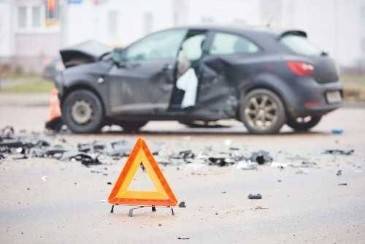Car accidents can be a devastating and life-changing experience for those involved. If you’re ever involved in a car accident in Indiana, it’s important to understand the role that evidence plays in determining fault and establishing liability. In this blog post, we’ll explore the different types of evidence that can be used in an Indiana car accident case, and how they can impact the outcome of your case.
Types of Evidence in an Indiana Car Accident Case
 There are several different types of evidence that can be used in an Indiana car accident case, including:
There are several different types of evidence that can be used in an Indiana car accident case, including:
Eyewitness testimony – Statements from individuals who witnessed the accident can be a powerful form of evidence. Eyewitnesses can provide valuable information about the events leading up to the accident, who was at fault, and the severity of the impact.
Police reports – A police report is an official document that provides a detailed account of the accident. It typically includes information about the location, date and time of the accident, the parties involved, and any injuries or property damage that occurred.
Medical records – If you were injured in the accident, your medical records can be used as evidence to show the extent of your injuries and the treatment you received. This can help establish the amount of compensation you may be entitled to for medical expenses, lost wages, and other damages.
Photographs and videos – Photographs and videos taken at the scene of the accident can be powerful evidence. They can help establish the severity of the impact, the position of the vehicles, and any damage to property.
Expert testimony – Expert witnesses can provide testimony about technical aspects of the accident, such as vehicle speed, braking distances, and the force of impact. Their testimony can be used to support or refute claims made by the parties involved in the accident.
The Role of Evidence in Determining Fault and Liability
In an Indiana car accident case, the plaintiff (the person bringing the case) has the burden of proving that the defendant (the person being sued) was at fault for the accident. This requires presenting evidence that demonstrates that the defendant breached their duty of care, which led to the plaintiff’s injuries.
The evidence presented in the case will be used to determine fault and liability. If the evidence shows that the defendant was negligent, they may be held liable for damages, including medical expenses, lost wages, and pain and suffering.
It’s important to note that Indiana is a modified comparative fault state, which means that if the plaintiff is found to be partially at fault for the accident, their compensation may be reduced by the percentage of fault assigned to them.
There are other factors that can impact the outcome of an Indiana car accident case. These include the statute of limitations, the insurance policies of the parties involved, and the presence of any pre-existing conditions.
The statute of limitations is a legal time limit for filing a lawsuit. In Indiana, the statute of limitations for personal injury cases, including car accidents, is two years from the date of the accident. If you fail to file a lawsuit within this timeframe, you may be barred from pursuing legal action.
Insurance policies can also play a significant role in a car accident case. Indiana is a “fault” state, which means that the person who caused the accident is responsible for paying for any damages. However, Indiana also requires drivers to carry minimum liability insurance coverage. This coverage can help pay for damages in the event that the at-fault driver does not have the financial resources to pay for them.
Pre-existing conditions can also impact an Indiana car accident case. If you had a pre-existing condition that was worsened by the accident, you may be entitled to compensation for the increased damages. However, it can be difficult to prove that the accident was the sole cause of your injuries if you had a pre-existing condition.
As a personal injury law firm in Indiana, at Wyant Law we understand the critical role that evidence plays in determining fault and liability in a car accident case. That’s why we work closely with our clients to gather as much evidence as possible to support their case.
We start by investigating the accident, which includes gathering police reports, eyewitness statements, and medical records. We also work with experts in accident reconstruction to recreate the accident scene and determine the cause of the accident.
Based on the evidence gathered, we build a strong case to prove fault and liability. We also work with experts to provide testimony in court to support our clients’ cases.
We also negotiate with insurance companies on behalf of our clients to ensure that they receive fair compensation for their damages. And if necessary, we represent our clients in court and present evidence to a judge and jury to prove fault and liability.
Throughout the legal process, we provide guidance and support to help our clients navigate the complex legal system and work towards a successful outcome for their case. Our goal is to achieve a fair and just outcome for our clients and help them move forward after a car accident.

